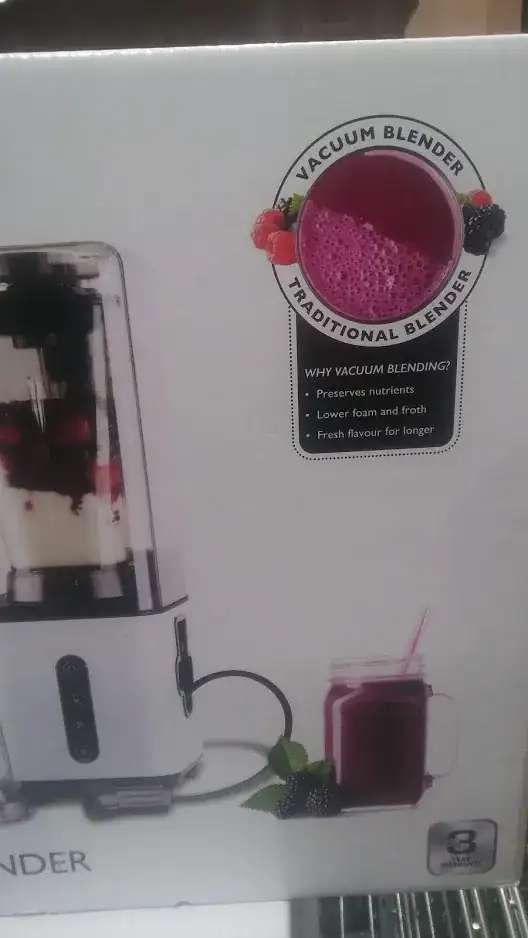In short:
- Most reviewers agree that the smoothies prepared by vacuum blenders are less frothy than those prepared by regular blenders, but they don't necessary agree about the better taste.
- Immediately after blending, there is a very small loss (<5%) of nutrients, such as vitamin C, prepared by regular blenders; after 1 hour of storage, the loss is still <20% (here). The producers of vacuum blenders tend to present the results of their own studies in a misleading way, like 3 times better preservation of vitamin C after 8 hours (here) and 5 times better preservation after 24 hours (here), compared to regular blenders, but this is not how much a "nutrient-conscious" person likely waits before drinking a smoothie. Vacuum blenders also do not preserve the amount of minerals or macronutrients (carbohydrates, proteins, fats) better than other blenders.
Does vacuum blender cause less foam/froth and taste better?
There are pictures and videos of several fruit/vegetable smoothies with obviously less frothing after vacuum blending. The claim has been also repeated in various reviews.
Consumer Reports:
"In vacuum mode, all four blenders made smoothies that were smoother,
less foamy, and more consistent in texture than the smoothies we made
in regular mode," says Cindy Fisher, who oversees our blender tests.
In our informal taste test, staffers found that the smoothies were
comparable...
In a review by Which.co.uk, they also observed the difference in frothiness but not in taste.
Business Insider:
It makes your juice taste better and last longer.
So, the reviewers agree about less froth, but not necessary about the better taste of smoothies prepared by vacuum blenders.
Does vacuum blender preserve nutrients better than classical blenders?
1) In this video, an apple smoothie made with a vacuum blender remains green, while the one made with a usual blender becomes progressively brown within 10 minutes. The browning is due to oxidation of polyphenols after exposure to air in the same way as in cut apples (Science Focus). From this video alone, it is not possible to quantify the effect: what percent of polyphenols got oxidized and how less nutritious would such a smoothie be.
2) Philips presented the results of "independent research:"
The University of Natural Resources and Life Sciences, Vienna (BOKU)
conducted independent research. They found that preservation of
nutrients is higher with a high speed vacuum blender compared to
normal blending for vitamin C and antioxidants. Up to three times more
of vitamin C was persevered after 8 hours vs normal blending and 60%
more antioxidant activity preserved after 8 hours.
After 8 hours, the loss of vitamin C in the smoothie made by a normal blender was ~250% greater and the loss of antioxidants ~60% greater than in the one made by a vacuum blender, but they don't say what was the difference after only 1 hour.
In one study with a strawberry juice prepared by a usual blender, less than 20% of vitamin C was lost after 1 hour of storage at 28 °C, but almost 100% after 8 hours (Figures 3 and 4). This clearly suggests that the loss of vitamin C in a smoothie prepared with a usual blender (in the Phillips study mentioned above) would be also much smaller after 1 hour than after 8 hours.
